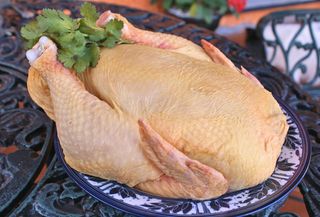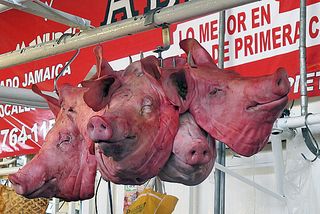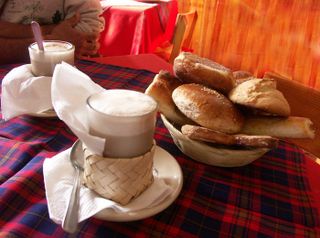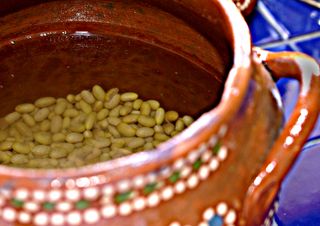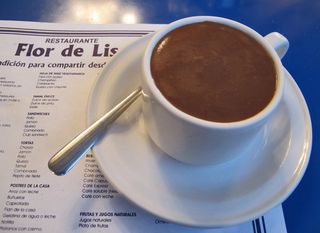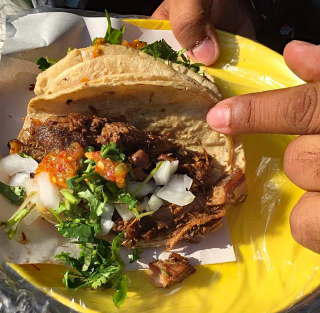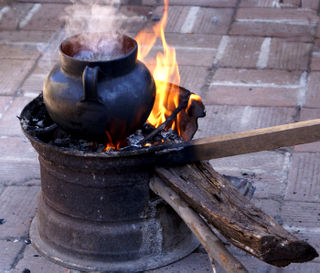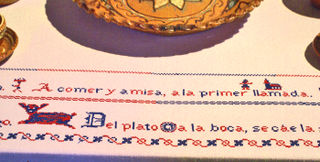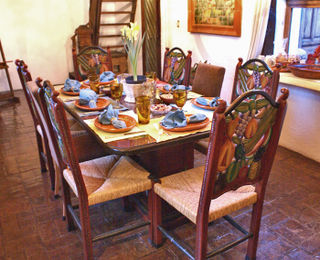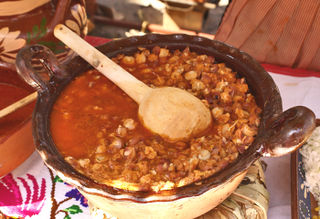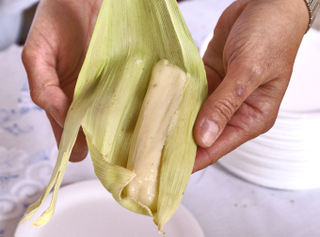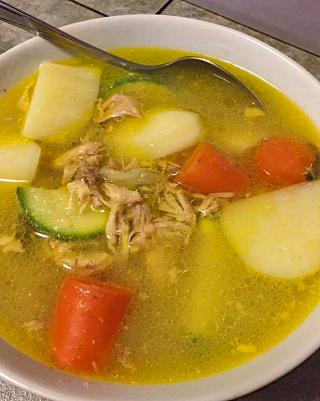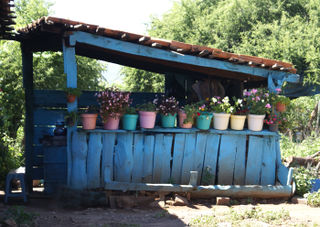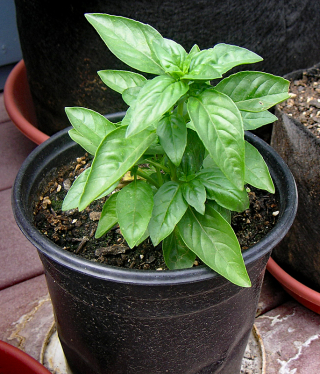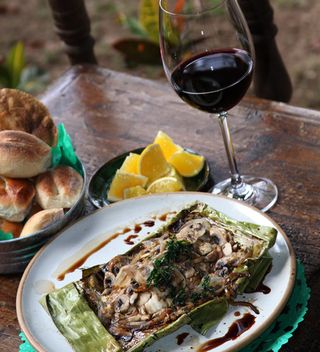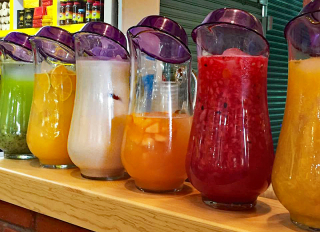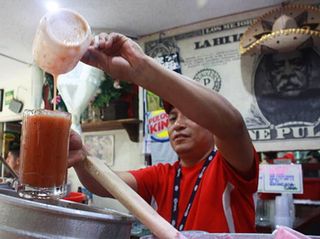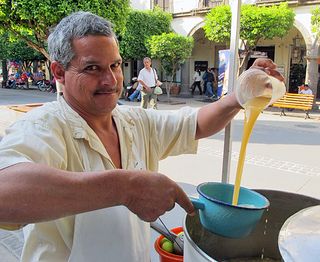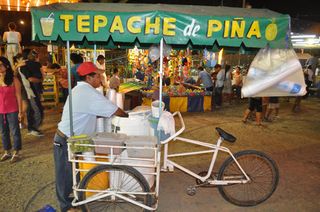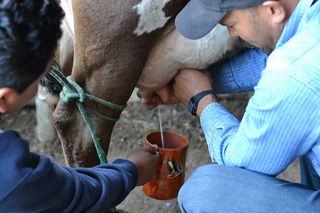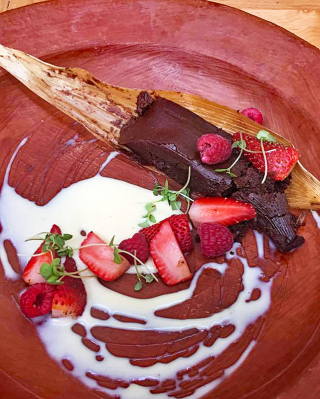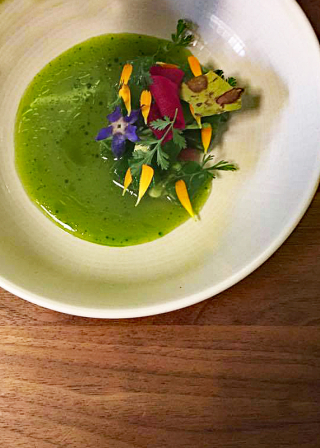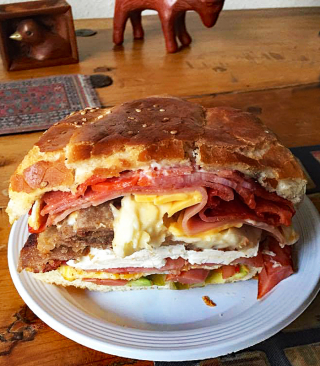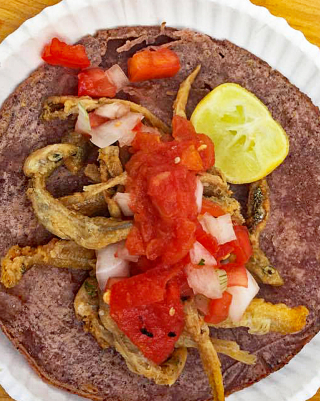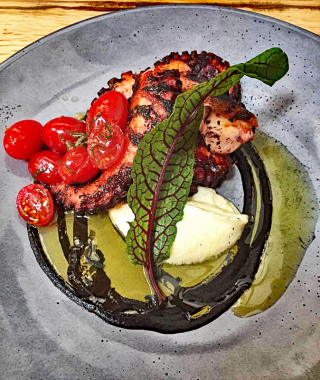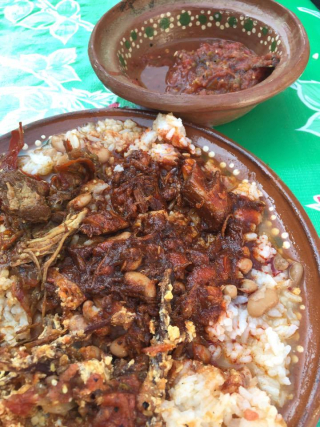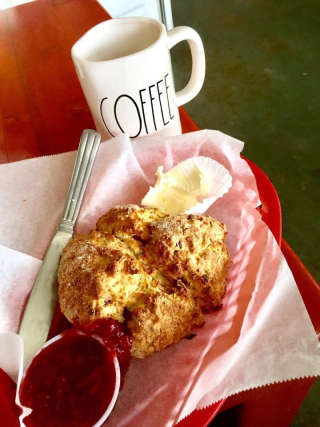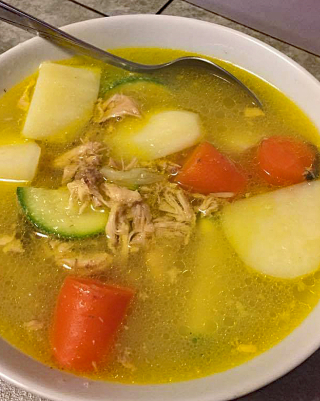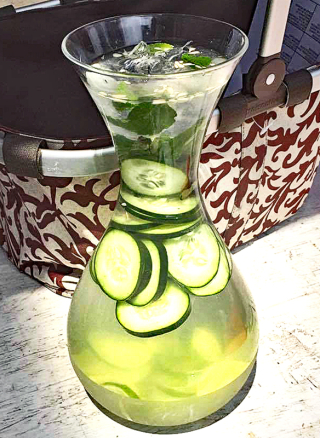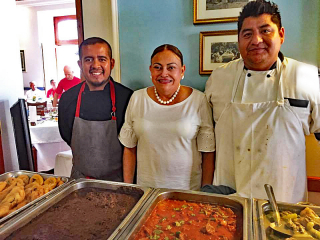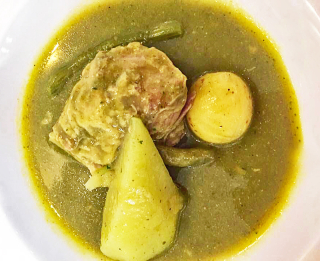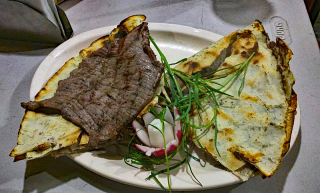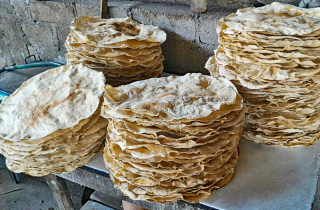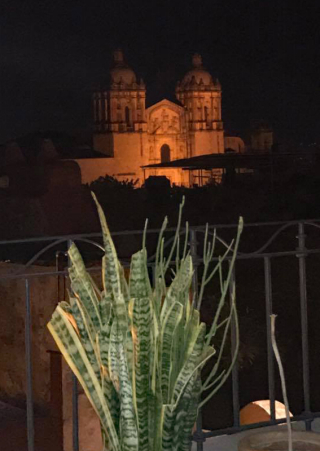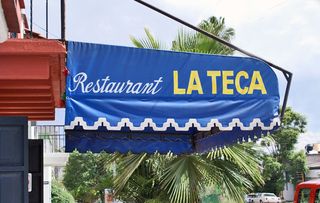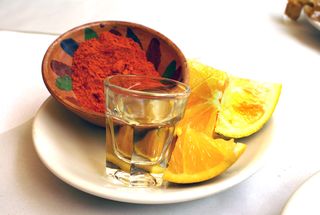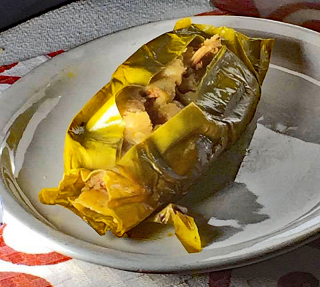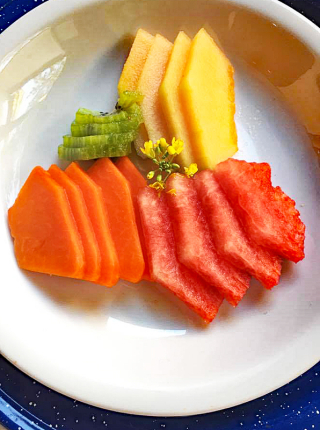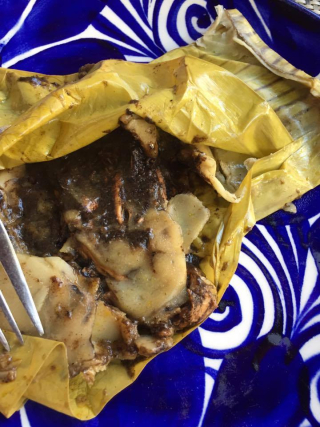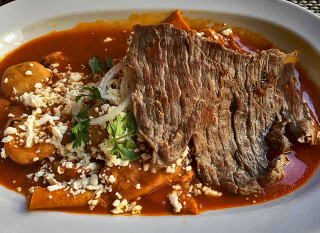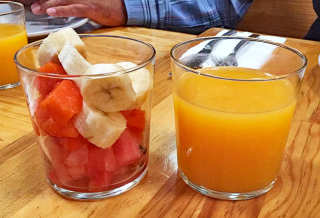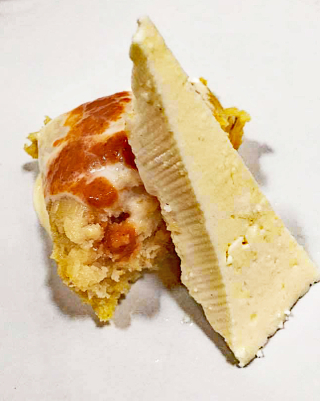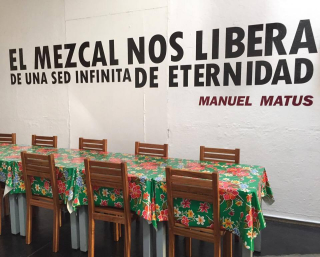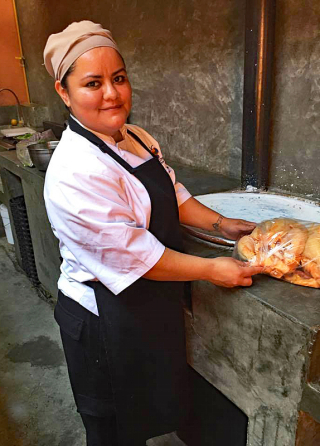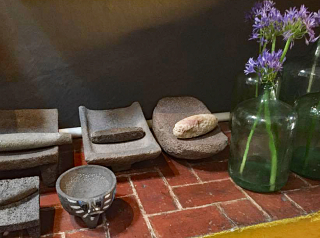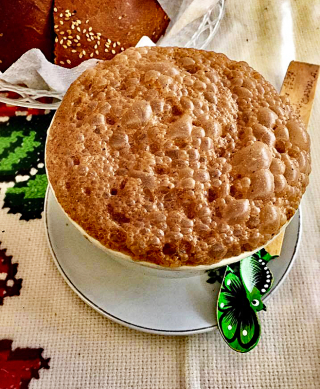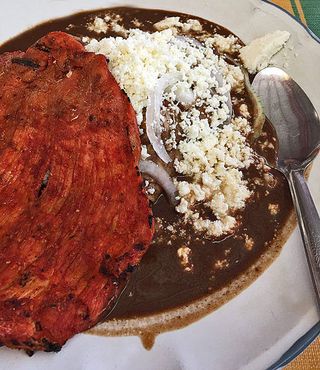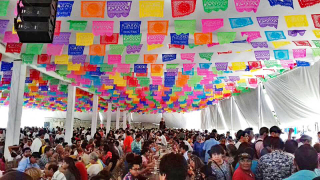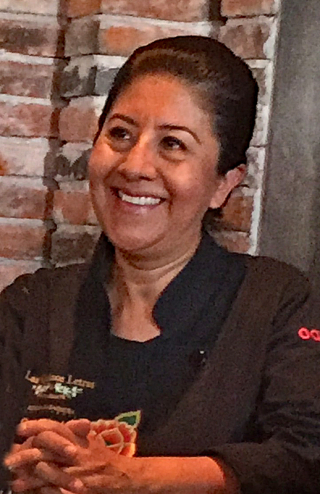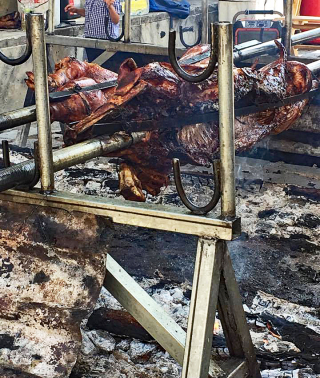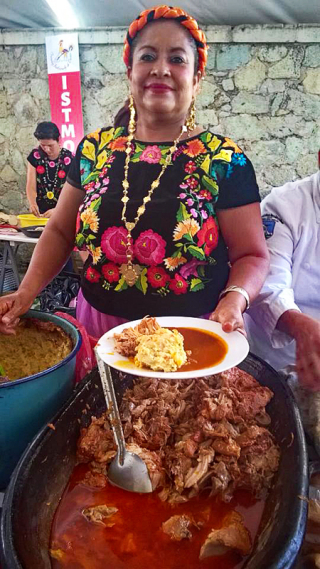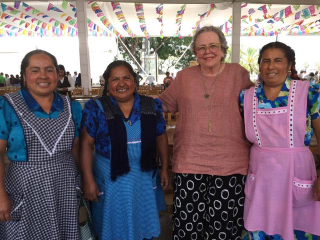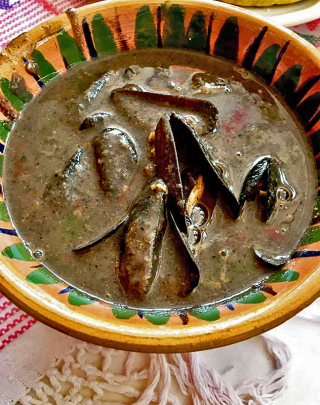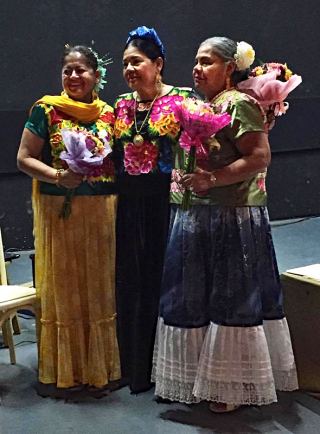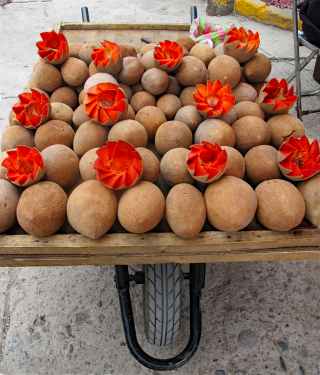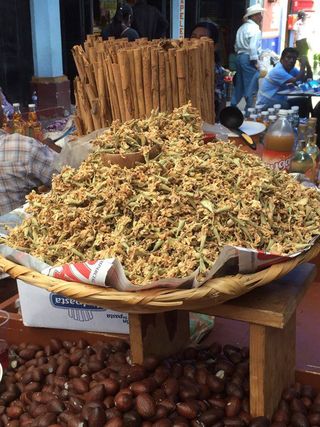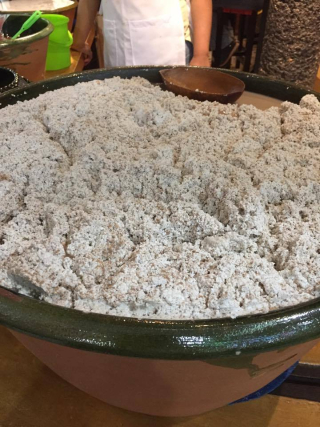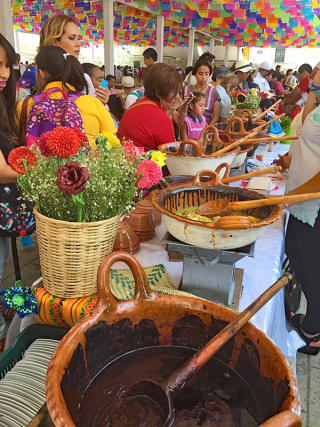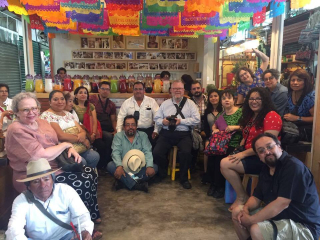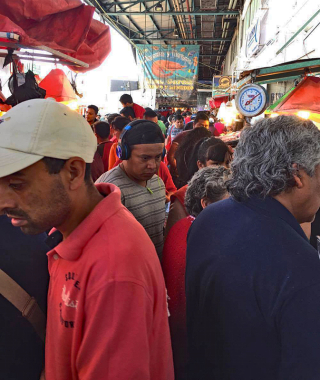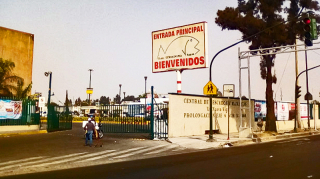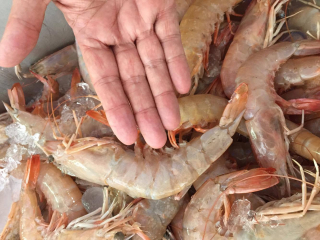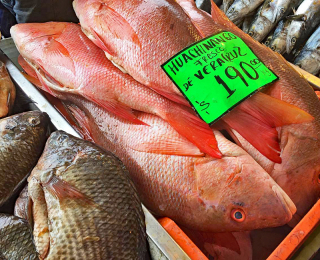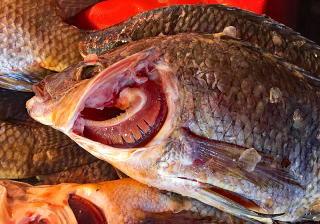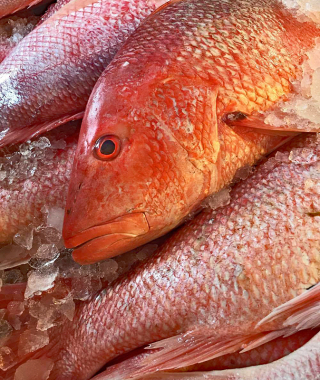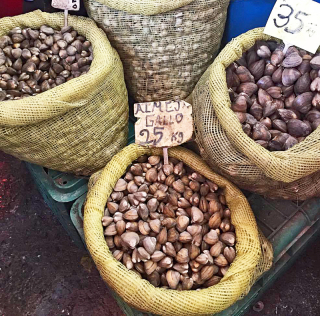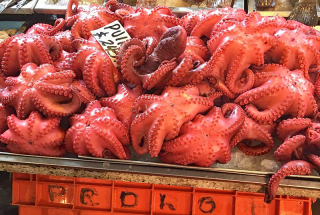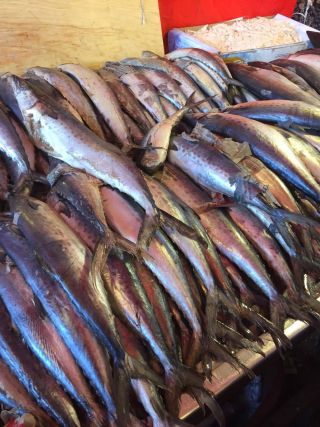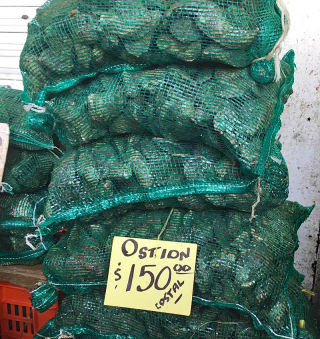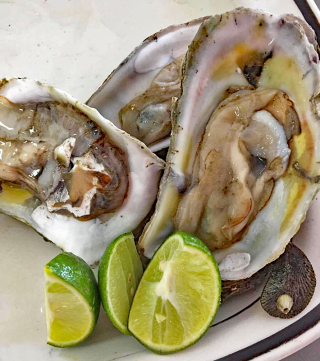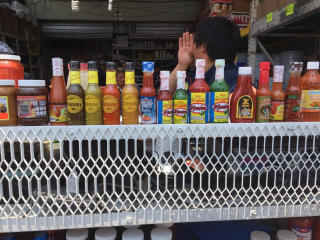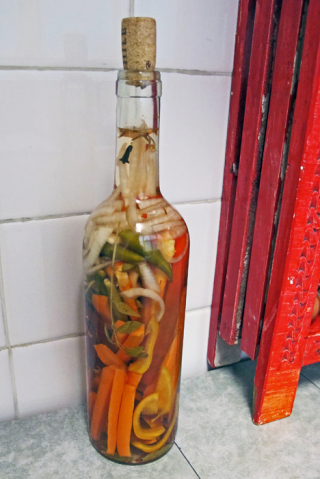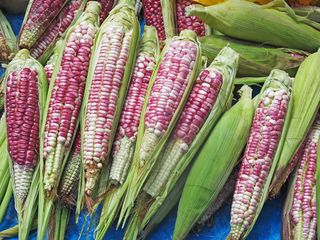
Freshly picked red and white corn at a Pátzcuaro, Michoacán tianguis (street market).
The typical Mexican tianguis (street market) is a multi-layered event. It combines wonderful shopping with catching up on gossip and meeting friends. It's a place to restock your larder and recharge your spirit at the same time. The tianguis is the perfect spot to buy lovely and inexpensive flowers, delicious field-fresh produce, and succulently sweet tropical fruits. I also buy all of my fresh fish, chicken, cheese, and meat right there, from the vendors at the tianguis. When I tell some friends from North of the Border where I shop, many exclaim, "What! Aren't you afraid of—afraid of—" and their questions fade into puzzled silence.
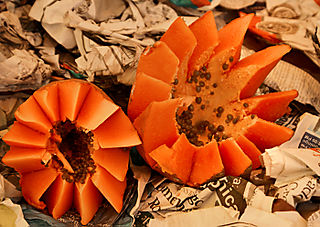
Beautiful Mexican papaya, sold year-round at almost every tianguis. Wrapped in newspaper for trucking from grower to market, it's expertly cut to show prospective buyers the ripe, sweet flesh.
No, I am not afraid. Not of food poisoning, not of communicable diseases, not of spoilage. After years of purchasing nearly all of my produce, meats and dairy products at the tianguis, I believe that it's just as safe and healthy to buy those items from the tianguis vendors as it is to buy them from a supermarket refrigerator case. People say, "But what about refrigeration at an open-air market? And what about flies?" Perishables like meats, fish, and chicken are generally displayed on a bed of ice. I've rarely seen flies anywhere at a tianguis! Neither have I been sick nor had any sort of problem from any of the foods I buy from the market vendors. The friends I've convinced to try the vendors report the same thing: unequalled satisfaction and never a problem.
It took me some time to figure out not only what I needed but also where at the tianguis I wanted to buy. If there's a tianguis near you, you can figure it out, too. My main rule of thumb is to buy where crowds have gathered to shop and to make my purchases where the fresh foods I want are clean and displayed to catch the buyers' eye. I haven't been disappointed. The quality of meat (particularly chicken and pork) is far superior to anything I've bought from a butcher. The cheeses are unbeatable. The fish is inevitably fresh and clean. Not only are the eyes clear but the fish still smell of the ocean.
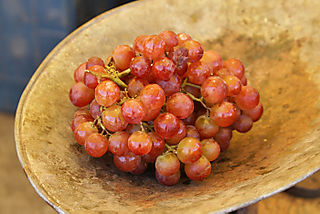
Seedless red grapes, ready to be weighed at a small tianguis in Morelia, Michoacán.
It's always best to go to the tianguis early to buy products that need refrigeration. During those first hours of the market, the meats, fish, and dairy products are still chilled and the selection is good. Later in the day, some items may not be available and what's left might look a bit tired.
There are usually several fishmongers at any good-sized urban tianguis. A fishmonger's booth is usually large and filled with a variety of fish. Dorado (mahi mahi), huachinango (red snapper), lenguado (sole), robalo (sea bass), mackerel, crabs, shrimp, octopus, tilapia, and a full assortment of others fresh from the sea compete for space on a bed of ice.

You can request your fish entero (whole), filete (filleted), or even molido (ground, for ceviche). If the fish is small, expect to pay by weight for the whole fish even if you ask for it filleted. If the fish is very large, like a dorado (mahi-mahi) or the much larger atún (tuna), you'll be charged only for the fillets. Occasionally it's possible to make an advance order for a special request. I've asked for fresh sea scallops or soft shell crabs when they're in season. If you're making a request for a specific menu, it's always best to have an alternative in mind: sometimes the special item you want isn't available.
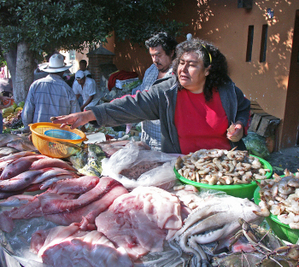
All of the fish sold by these vendors in the state of Jalisco comes to the main fish market in Zapopan (a suburb of Guadalajara) from the Atlantic or Pacific oceans. The vendors are at the fish market long before dawn to purchase freshly caught fish to sell in the tianguis. For an up-close look at La Viga, the enormous wholesale fish market in Mexico City, read here.
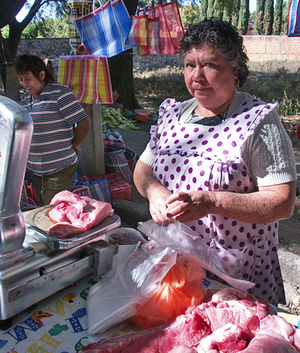
At some tianguis (but not all) you'll find vendors selling pork and some beef from their booths. This table is just big enough for a few large pieces of fresh pork ready to be cut to order, a scale, and a roll of plastic bags. Some days they also have freshly rendered lard for sale.
The first time I shopped for meat at a tianguis, I requested a kilo (approximately two pounds) of maciza (solid boneless leg of pork) that I could use to prepare carne de puerco con chile verde. You can also have maciza ground for albóndigas (Mexican meatballs) or to mix with ground beef for a meatloaf or Italian meatballs. While I was waiting for my maciza, I noticed a beautiful bone-in lomo (in this case, pork loin) and made a mental note to add one to my shopping list another week.
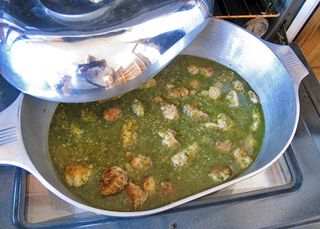
Browned cubes of pork in salsa verde (green sauce). All of the ingredients for this dish (pork, lard, tomate verde [tomatillos], chile serrano, cilantro, and onion) came from my local tianguis. It's ready to go into the oven.
The butcher told me that he buys only first class hogs and has them butchered at the municipal slaughterhouse. At the tianguis, he and his mother sell either lomo or maciza cut to your specifications. The price for either meat on the day that I talked with Sra. Gómez, his mother, was $60 pesos per kilo. The meat is not refrigerated at the tianguis, but it is meat-locker cold when it is placed in the cooler where it is kept until it's sold out, usually by 10 AM.
A little over a year ago I noticed that a new chicken seller had set up shop at the tianguis where I shop. When I prepared the first skinless, boneless chicken breast that I bought from Jaime Ribera, I was hooked. Brought freshly killed to the tianguis on Wednesday mornings, Mexican chicken is the freshest, pinkest, plumpest, most flavorful chicken I have eaten in my life. This chicken is immaculately clean, as is his booth.
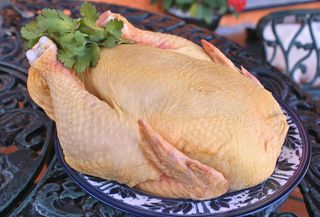
A whole Mexican chicken. It weighs approximately three kilos (about six and a half pounds). This one was destined for the soup pot.
The pallid birds of the USA grow even paler in comparison to these glorious creatures. Chicken this good was not available even in the markets I frequented during two months I spent in France.
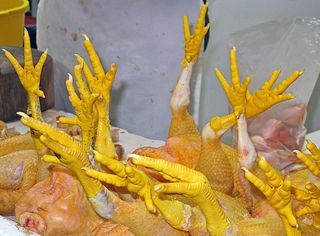
Jaime sells his chicken any way you want it, from a whole bird to just the feet. Breasts can be had with or without skin and bones. If I want the nearly paper-thin breast meat that is used here for preparing milanesa de pollo (breaded chicken), Jaime either has it ready or cuts it for me while I wait.
Although chicken livers are sold as is–still connected to the hearts–I always ask him to sell me just the livers. He carefully picks the hearts out of the mix. And when I buy the golden yellow feet—I use them when preparing chicken stock—he always makes sure the toenails are well-trimmed.

Here's a list of chicken prices from a couple of years ago; prices have gone up and will probably be as different at your local tianguis as they are at the one where I shop. If your Spanish needs brushing up, though, you'll find the names of the parts helpful. From the top down:
Entero: whole chicken. Gallina: whole laying hen. Pechuga: breast of chicken. Pierna y muslo: leg and thigh. Retazo: the back with wings attached. Molleja: gizzard. Hígado: liver. Pata: the foot. Guajolote: turkey. Nuggets: you know already!
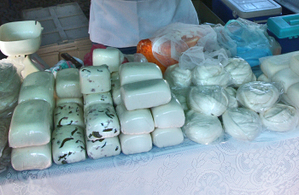
These vendors also sell a variety of cheeses, thick crema (Mexican table cream, similar to French creme fraiche), requesón (Mexican-style cottage cheese, similar to Italian ricotta), and corn or flour tortillas. All of the most perishable dairy products are kept fresh and cold in coolers during the selling day.

My dairy product buying isn't confined to just one vendor. I usually purchase cheeses from another booth. Santiago and Ana Isabel Valdomillos specialize in cheeses, cream, yogurts, honey, and chicken nuggets, smoked pork chops, and other easy-to-prepare meats. You'll also see small bottles of Yakult, a drinkable live-bacteria yogurt.

I'm particularly fond of Santiago's queso cotija, a cheese named for the town in Michoacán where it originated. It's a sharp and fairly dry cheese which crumbles easily. As it ages, it becomes drier and sharper. It's delicious crumbled over refried beans and atop a plate of enchiladas, or stirred into soups as a thickening agent.
Santiago smiled when I asked how long he had been selling at the tianguis. "Altogether, it's been more than 28 years." He gestured with his index finger held straight up near his waist to indicate the height of a small child. "I used to help my Dad when I was no taller than this." The dairy and other products are kept cold in coolers throughout the day. The products kept out for sale on the tables are also covered with cheesecloth to protect them from flies.
I think you'll be wonderfully surprised by the freshness, quality, and prices of the fish, meats, chicken, and dairy products offered for sale by these vendors. There's no reason to shop elsewhere for what you'll find–of better quality and for less money–on your regular outing to the tianguis.
One last note: the word tianguis comes from the Náhuatl word for street market. The word is the same whether it refers to one tianguis, two tianguis, or all of the tianguis in Mexico. Here's how to pronounce tianguis: tee-AHN-geese. Have a wonderful time shopping!
Looking for a tailored-to-your-interests specialized tour in Mexico? Click here: Tours
